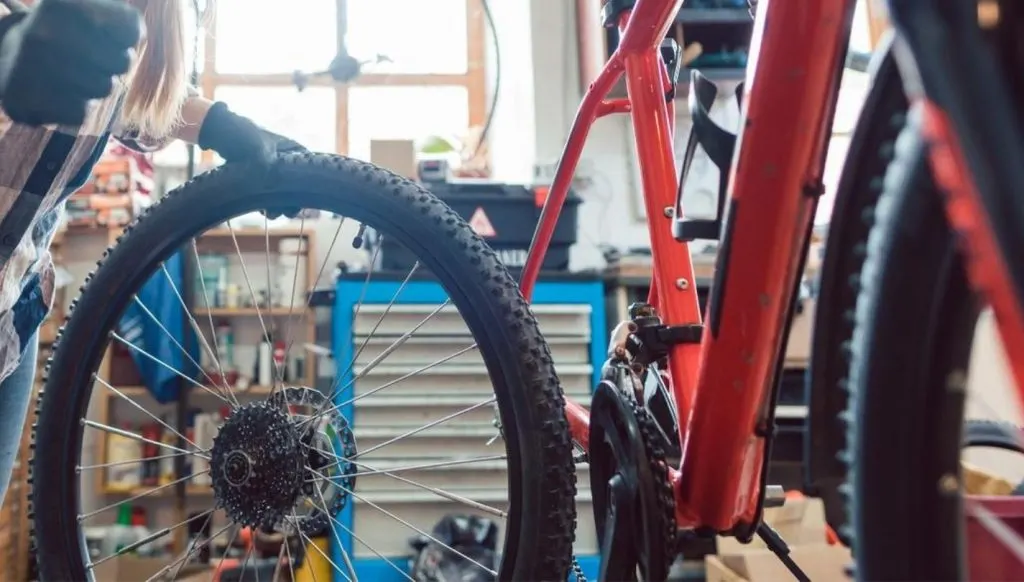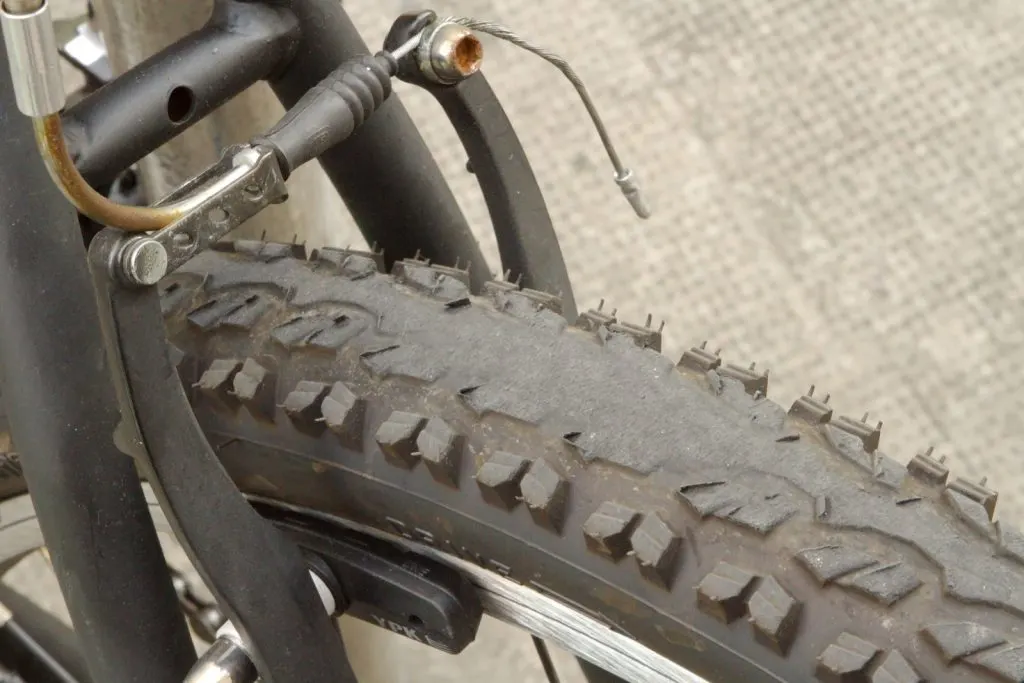
When you get around to replacing the rubber on your bicycle, either due to old age, wear, or if the tire is slashed beyond repair, many cyclists wonder if replacing the whole tire and tube combination would be a better option than just replacing the tire and leaving the old tube in place.
A bicycle tire should be replaced if:
- it has been standing for a long period and has oxidized
- if the tread pattern is no longer deep enough to perform as it was intended
- if it has been gashed by an object you have ridden over.
Your tube however, does not need to be replaced unless it is no longer holding pressure.
So apart from the tire being damaged or old and the tube not holding air, can you just carry on riding as normal? Well, yes, but let’s have a look at those occasions when replacing your tire and/or your tube should be a priority on your to-do list.
When Do you Need to Replace a Bicycle Tire?
Many times, the tube will be fine but the tire needs replacing. And sometimes both will require a replacement. Firstly, let’s take a deeper look into the scenarios where you would need to replace your bicycle tire…
Insufficient Tread Depth Would Require Tire Replacement
The tread pattern on a bicycle tire is not there just to make it look cool. Depending on the terrain you are riding over, the kind of bike you ride (whether it is a mountain bike, a road bike, or a gravel bike), and the weather prevalent in the area in which you normally go out and ride, the tread will be remarkably different for different circumstances.
What holds true for any type of riding, however, is that the tread pattern should be in good enough shape to perform its function. Obviously, the efficiency of a new tire will slowly degrade over time and wear, but if it isn’t holding the surface, replace it.
A knobbly tread pattern, which is mostly to be found on mountain bikes and gravel bikes, will provide a better grip on loose surfaces like sand and gravel. The lands between the knobs are usually spaced further apart for muddy surfaces and the knobs themselves are often more pronounced.
Dry surfaces have more closely spaced knobs and there are more of them. If the knobs are not doing their job of biting into the surface, then it is time to have them replaced
Grooved pattern tires are usually found on road bikes. The grooves help the tire to displace any water on the road to the side of the tire, thus reducing the amount of vertical spray into the rider’s face or the face of the rider behind.
Riding a road bike in dry conditions is a non-issue as the tread pattern does nothing to maintain the direction of the bike. If the carcass of the tire is wearing thin though, then it is imperative that it is replaced as a blowout at speed can lead to serious injury or worse.
If the Tire is Old, It Should be Replaced
Modern bicycle tires are made up of various combinations of materials such as:
- natural rubber
- synthetic rubber
- softening agents like waxes and silicates.
When the tire is in regular use the flexion and compression of the rubber distributes these softening agents evenly around the body of the tire. This action maintains the tires’ pliability.
However, when a bike sits idle in your garage for an extended period, the rubber compound that makes up the carcass and tread of the tire will slowly start to oxidize and break down at the molecular level making the tire brittle and stiff and unable to efficiently distribute the softening agents in the tire.
This is known as dry rot and if your tires are in this state you should change them for new rubber as soon as possible. Again, a blowout at speed will only be to your detriment and to that of the integrity of your bicycle.
Ultraviolet Radiation & Extreme Temperatures Can Warrant a Tire Replacement

Ultraviolet radiation and extreme temperatures are also problematic issues for your tires. If you store your bike outside, the sunlight can damage it at a molecular level, drying the tire out and making the tire stiff and brittle.
The rubber of your tire will actually expand if you leave it outside in cold weather, and then contract when it heats up. This constant expansion and contraction can also be detrimental to the integrity of the tire.
A Slashed Tire Needs to be Replaced
If your tire is slashed open and it is beyond reasonable repair, then it goes without saying that you should replace it with new rubber. If the tube has been slashed open as well, and there is no way that a patch can seal it up, then change the tube too.
When to Change your Tubes
Bicycle tubes will last much longer than the tire that it is sitting within. A bicycle tube is not exposed to ultraviolet rays, to extreme temperatures, or to wear from the road surface, so it will last much longer. But of course, there will be times when it does need replacing. Let’s take a look at when you would need to replace the tube…
When Punctures Occur…
If punctured, your inner tubes can be repaired with a simple patch over the leak and they will, until the next puncture (which is pretty much inevitable in the world of cycling), hold whatever pressure you place in them.
Bicycle tubes are constrained within the tire itself so there is very little pressure on the wall of the tube as the stress of the pressure is mostly contained by the wall of the tire itself. If your tube starts to look like a patchwork quilt then it may be time to visit your local bike shop and buy a new one.
You should replace your tubes when they are not holding air. When you pump your tires to the correct pressure at the beginning of your ride, pay attention to how much air they have lost from the last ride you had.
All inner tubes will lose a small amount of air between rides but if it is starting to lose more and more then it may be that the rubber has degraded to the extent that it releasing air through the wall of the tube. Replace the tube if this becomes an issue for you.
- Check the integrity of your valve stem.
This is easily done by rubbing a solution of water and dish soap over the opened valve with your finger. If bubbles start to form then it is time to replace the valve. If bubbles form around the base of the stem when you rub the mixture where it is joined to the rubber of the inner tube, then you will need to replace the entire inner tube.
Conclusion
Tires should be replaced when:
- they are not holding the line you wish to take
- if they are old and brittle
- if they are damaged beyond repair.
Inner tubes are not exposed to the same impacts and stresses as the tire itself and, as long as they are holding air, it should be fine to keep using the same tube from tire to tire.
Having said that, inner tubes are not expensive. They run around $5.00 each so it is not as though you have to take out a loan from your bank to afford one. Generally speaking, I would recommend that you change your inner tube every time you change your tires as a matter of good practice.
